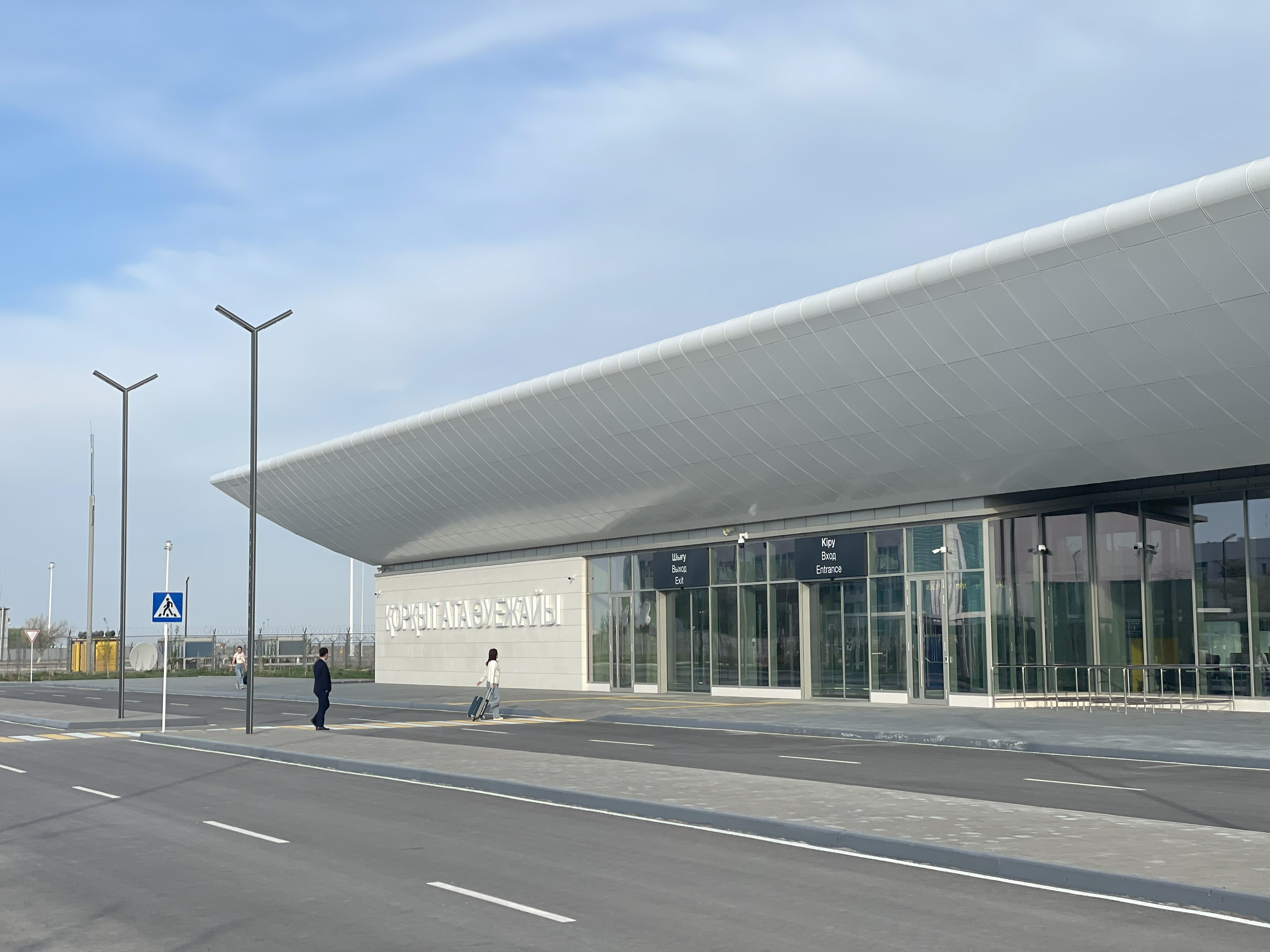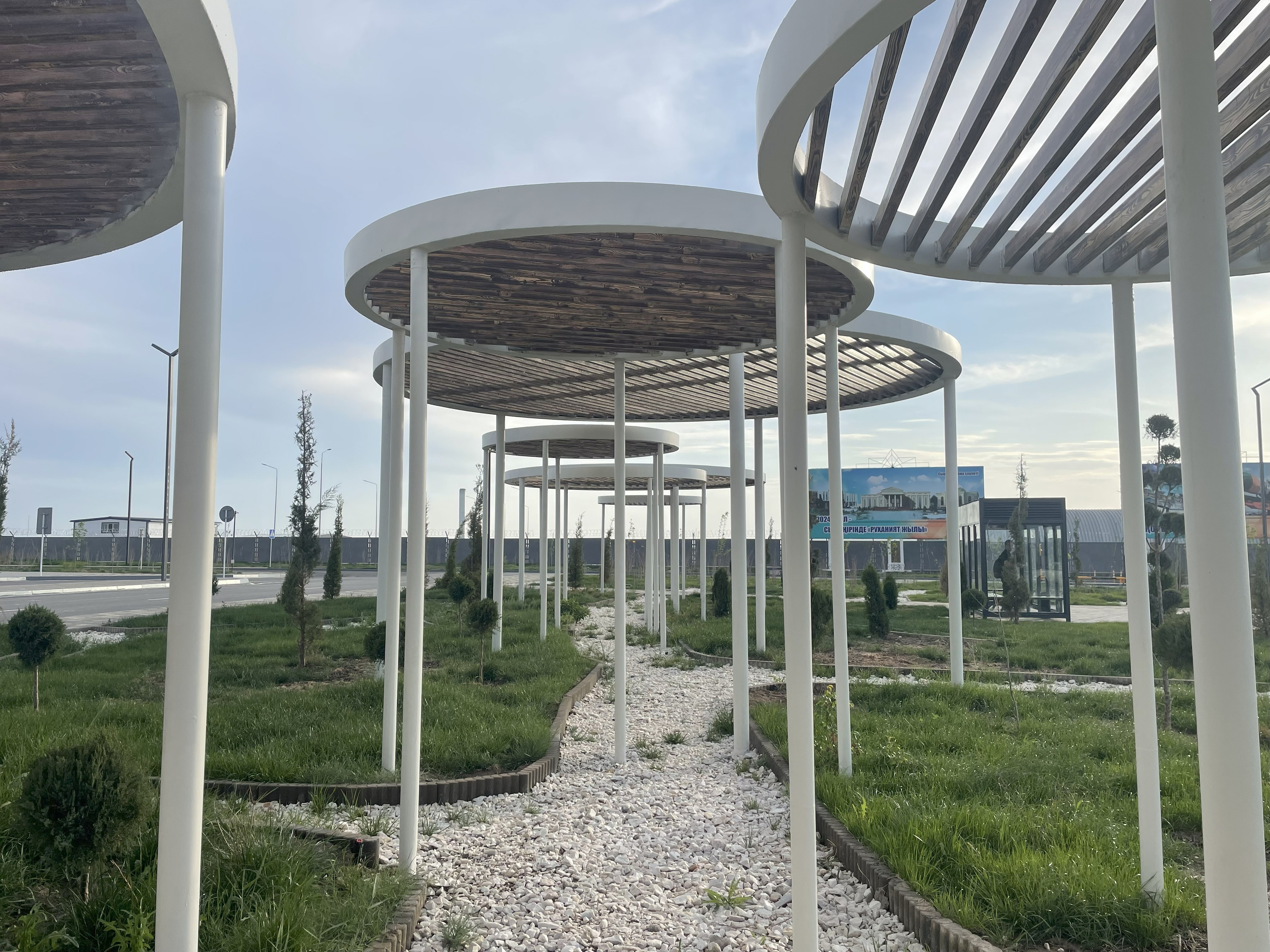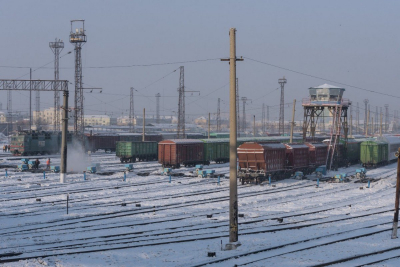Contemporary Kazakhstan Through the Eyes of Asel Yeszhanova
20.06.2025 15:02
A look at the buildings that inspire local architects
Kazakhstan has undergone many changes since independence in 1991. The country’s transformation can be seen in its architecture. To explore this development, Vlast publishes a series about Kazakhstani architecture since 1991. We asked local architects about their favorite contemporary buildings. Architect Asel Yeszhanova was the first to weigh in.
Читайте этот материал на русском.
Almaty Botanical Garden
The entrance pavilions to Almaty Botanical Garden were designed by Portuguese studio Saraiva+Associados. The lightweight structures have an elegant, minimalistic, and bright design. The reconstruction of the Botanical Garden is an important landmark not only for the city, but also for plant conservation efforts in Kazakhstan. Improvements to the Botanical Garden, starting with the entrance area, remind us to approach plant life seriously. It also invites visitors to better acquaint themselves with the Institute of Botany, who maintains the garden.


Talan Towers in Astana
The architectural concept for Talan Towers was developed by US firm Skidmore, Owings & Merrill. This is an example of how ambitious commercial architecture can look elegant. The Talan Towers feel in harmony with their surrounding urban context. Despite their magnitude, the Talan Towers are not visually aggressive and do not subdue their surroundings.

AstanaGenPlan
I like this building because it consists of four stories, so it maintains a human scale. AstanaGenPlan is located in the older district of Astana and is well embedded into the existing historical context. I also like that it did not give in to the continuous glazing trend, which is an overused and less effective technique. The building is crisp, just as an office for urban architects should be.

ForteBank in Astana
Located in Astana’s newer left bank, this expensive metal structure was first erected in the early 2000s. It just stood there for a long time until it was reimagined by the Saraiva+Associados studio and inaugurated as ForteBank’s new headquarters in 2016. They transformed the structure, adding more volume and a minimalist accent of white. Such a simple yet effective color is a rarity in our cities. This is an example of how you can work with existing structures instead of tearing them down.
The building’s height is not extreme. Inside there is public space: a cafe, an art gallery, a coworking space. I see in this design an endeavor to communicate the bank’s core identity: a financial institution open to the people.

Arbat in Oskemen
The first Arbat (pedestrian street) in Oskemen opened in 2019. Unfortunately, except in Almaty and Astana, new buildings and new urban infrastructure in Kazakhstani cities are rare. And when they are built, they are often done with little attention to detail. But Arbat in Oskemen is well-constructed and inviting. People love Arbat because of this.

Pedestrian Street in Almaty’s Turksib District
It is important to strive for polycentric cities and develop non-central areas so that residents can have easy access to social infrastructure within walking distance. Another great example of this is a pedestrian street in the Turksib district in Almaty, resembling the city’s main Arbat.

Visitor Center in Ayusai National Park
The visitor center was designed by Singaporean architect Boon Sim. It is difficult to judge how much commercial infrastructure is needed in national park areas. At Ayusai, the architect’s design has set a standard for other parks on how to create a visitor center that is simple, open, and harmonious with the natural environment.

Airport in Kyzylorda
We are only now studying how to create infrastructure at a regional scale. But the airport in Kyzylorda approaches a new level. Its peaceful, soft shapes echo the infinite desert horizon of the southern region. Wooden elements in the exterior and the interior of the airport help visitors not to “get lost” in the endless landscape.


Works in Progress
The last two projects which I would like to highlight have not yet opened: the Tselinny Center of Contemporary Art and the Almaty Museum of Arts.
The independent art institution Tselinny will be realized in this vibrant building which redefines its Soviet legacy. This is a good example of how the history of a building can be reinterpreted, giving it a new purpose and establishing new traditions. British architect Asif Khan and his team have done a great job. Several times they redesigned the facade. When they received serious criticism from the residents and community leaders about their design with a glass facade, the architects listened and changed the concept, showing their openness to dialogue.
It is unfortunate that the project was not given to a Kazakhstani architect, but I think this is something local architects and developers can aspire to.

I find it a bit more difficult to talk about Almaty Museum of Arts, because as an architect I do not fully agree with Chapman Taylor’s design. In my opinion, this building is excessively monumental. But I also understand that it has its own important mission to demonstrate to locals and international tourists just how ambitious the city has become as it showcases the works of the most famous contemporary artists around the world.

Honoring an Innovator
It is important to recognize the work of Kazakhstani architect Bek Ibrayev, who is unfortunately no longer with us. I think he appeared at the most difficult moment in Kazakhstan’s contemporary history. Ibrayev sought to find our new identity and did so through architecture, materials, and reference to our landscape.

His most striking work was a monument to Korkyt-Ata in the Kyzylorda region. I find it sad that the original snow-white monument was covered with dark granite tiles. While this project pre-dates independence, I think that even at that time Ibrayev was already consciously departing from Soviet modernism and drew from our pre-Soviet history. I believe that he was inspired by the nature of Kazakhstan. He was bold and eager. We have yet to rethink Ibrayev’s concepts.
An edited version of this article was translated into English by Zeina Nassif.
Власть — это независимое медиа в Казахстане.
Поддержите журналистику, которой доверяют.
Мы верим, что справедливое общество невозможно построить без независимой журналистики и достоверной информации. Наша редакция работает над тем чтобы правда была доступна для наших читателей на фоне большой волны фейков, манипуляций и пропаганды. Поддержите Власть.
Поддержать Власть














